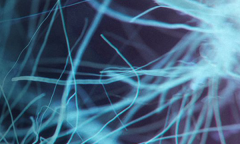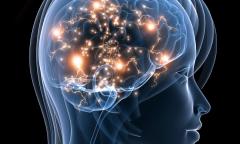How artificial intelligence is helping us to read brain scans
Researcher Baris Kanber explains how machine learning - or Artificial Intelligence - could enable more people with uncontrolled seizures to achieve seizure freedom.
For one third of people with epilepsy, their seizures do not respond to current medications. This means that they live with the daily worry of when the next seizure will happen. This can impact on education, employment, social life and relationships. Without question, it means they cannot drive.
For this group of people, the greatest hope of achieving seizure freedom is epilepsy surgery. But this is only possible if we can locate the precise, focal point in the brain where their seizures start.
MRI scans do not show any abnormalities
We have many sophisticated neuro-imaging techniques to look deep inside the brain. But in spite of this, for many people MRI scans do not show any abnormalities. Around 10,000 patients are identified in the UK each year as suitable candidates for epilepsy surgery. However, 3,000 of these will have normal MRI scans that do not show the focal point at which the seizures start.
EEG results are often able to give us a good indication of the region of the brain that is responsible for the seizures, but this is not precise enough to guide surgery.
Intracranial electrodes
One option is for us to use a process called stereoelectroencephalography (SEEG), which involves placing recording wires into the brain to try to locate the focal point at which seizures start. This involves implanting electrodes in the part of the brain where we suspect the seizures are occurring to try to pinpoint the precise location. Being able to locate the site of onset of seizures with SEEG is dependent on placing the electrodes in the right place, so we need to narrow down the areas to implant using all the information we can glean from brain scans.
Artificial Intelligence
We are undertaking an exciting new project which could give more people the chance of a seizure-free life. We are using innovative machine learning, or Artificial Intelligence (AI) to teach computers how to read MRI brain scans when the human eye is unable to detect any abnormalities. Our aim is to programme AI algorithms to differentiate between areas of the brain that do, and do not, generate seizures.
Machine learning
Machine learning involves a set of algorithms that enables software to 'learn' from examples, and can help in situations where epileptic lesions are too subtle for the human eye to distinguish.
And we are already achieving very promising results.
Investigating brain scans
We are looking at the brain scans of three groups of people:
• 60 controls who do not have epilepsy
• 50 people with epilepsy who do not respond to medication but have lesions that are visible on an MRI scan
• 40 people with epilepsy who do not respond to medications but have normal MRI scans.
We are training the algorithm by feeding it neuroimages s, enabling it to learn to identify important features which would suggest a focal point of the seizures. Basically, the algorithm must prove that when it reads an MRI scan, its findings correlate with those of other investigative methods already being used. Most importantly, we are comparing what we find with AI against what we find with SEEG.
What our results show
In the control group, the findings of the algorithm have been consistent in establishing that there are no seizure-generating lesions.
In the group of people who have lesions that are visible on an MRI scan, we have shown that the findings of AI generally match those of the neuroradiologist. These results are not yet perfect but they are very promising.
A 27-year-old woman, with right-sided brain tumour. The area detected by AI (red/yellow) agreed with that highlighted by the medical doctor (blue).
In the third group where MRI scans seem normal, we need to compare the findings of AI with the findings of intracranial electrodes in the brain through SEEG.
This group is crucial as these are the people whose focal points of seizure are the hardest to determine. This is also looking very encouraging with good correlation between the findings of AI and the results of SEEG.
We have shown how our method was able to locate the possible source of epileptic seizures for a 34-year-old woman with a normal looking brain scan. This was used in helping to plan her surgery and she is now seizure free.
A 34-year-old woman with focal epilepsy that was resistant to medication. The areas highlighted in colour were detected by AI as possible sources of epileptic seizures despite a normal appearing brain scan. These results agreed with the results of other investigations and were crucial in planning surgery.
Hope for the future
These results are very exciting. Initially most people thought AI would not work with such a hard problem. It has not been applied in this area before. But we are all thrilled with the outcomes. There are still many years of validation and clinical trials ahead of us but the project is very promising.
The key thing is that we are able to give more people with uncontrolled seizures the hope of a seizure free life.
Dr Baris Kanber is research associate in machine learning in epilepsy in the Department of Clinical and Experimental Epilepsy, UCL Queen Square Institute of Neuorlogy, and a senior research fellow in the UCL Centre for Medical Image Computing.
The research is supervised by Gavin Winston, Associate Professor of Neurology at Queen's University, Canada, and Honorary Associate Professor at UCL Queen Square Institute of Neurology.
The research is funded by the Sobell Foundation and Medical Research Council.
Genomics
Read how we are working to understand the genetic architecture of each individual person's epilepsy through our world leading genomics research programme.
Neuroimaging
Neuroimaging enables us to look deep inside the brain to learn more about the impact of seizures on its structure and function.
Neuropathology
The Epilepsy Society Brain and Tissue Bank is the first of its kind in the UK. It is dedicated to the study of epilepsy through brain and other tissue samples.



